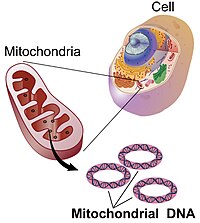
Photo from wikipedia
RESEARCH QUESTION Conception via Assisted Reproduction Technologies (ART) increases risk of Type 2 diabetes and cardiovascular disease in adulthood. Underlying differences between ART-conceived and in vivo-conceived embryos that contribute to… Click to show full abstract
RESEARCH QUESTION Conception via Assisted Reproduction Technologies (ART) increases risk of Type 2 diabetes and cardiovascular disease in adulthood. Underlying differences between ART-conceived and in vivo-conceived embryos that contribute to this increased risk are not known. DESIGN This study examined developmental characteristics of mouse blastocysts derived from ART compared with in vivo-conceived embryos. To determine the effect of ovarian stimulation versus in vitro fertilization (IVF) versus in vitro embryo culture on phenotype, six distinct groups of blastocysts were generated. Female mice were naturally cycling or treated with high or mild doses of gonadotropin; followed by natural mating or IVF in clinical conditions. Embryo morphokinetics were assessed by continuous time-lapse monitoring. Cell lineage allocation to inner cell mass (Oct4+) or trophectoderm (Cdx2+) was determined by immunohistochemistry and mtDNA copy number measured by qPCR. RESULTS Ovarian stimulation increased embryo number but reduced the percentage of blastocysts. Morphokinetic analysis showed that gonadotropin treatment led to advanced development (P<0.05) due to earlier post-pronuclear breakdown. Blastocyst rate was reduced in IVF embryos compared with those fertilized in vivo prior to culture (P<0.001). Morphokinetics showed embryo development was slower in all IVF groups (P<0.05), due to a delay from the 3-cell stage. Reduced total and trophectoderm cell number was observed in all groups of cultured blastocysts compared with naturally-conceived blastocysts (P<0.01). Gonadotropin treatment did not affect blastocyst mtDNA copy number; however, IVF embryos exhibited reduced mtDNA copy number compared with naturally-conceived embryos. CONCLUSION Ovarian stimulation, IVF and in vitro culture differentially impair blastocyst developmental kinetics, differentiation and mtDNA copy number.
Journal Title: Reproductive biomedicine online
Year Published: 2019
Link to full text (if available)
Share on Social Media: Sign Up to like & get
recommendations!